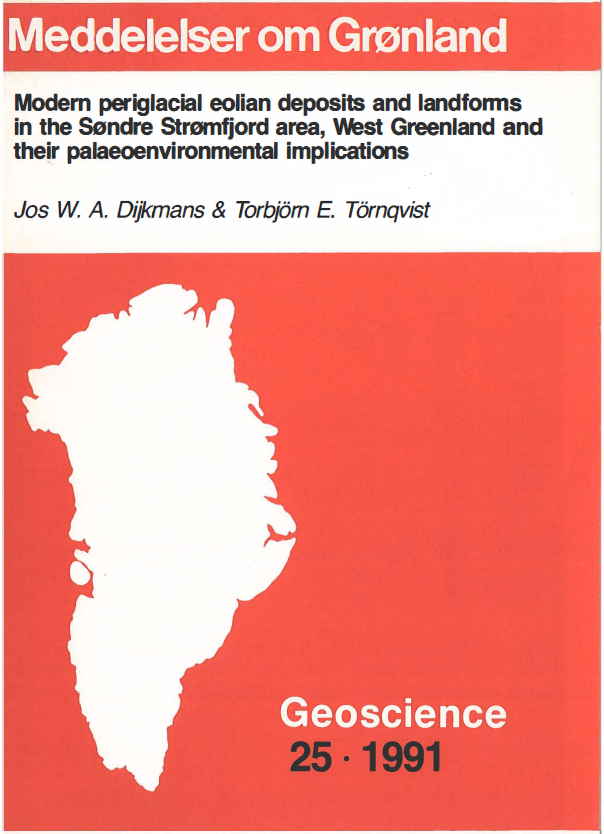Modern periglacial eolian deposits and landforms in the Søndre Strømfjord area, West Greenland and their palaeoenvironmental implications
DOI:
https://doi.org/10.7146/moggeosci.v25i.142021Abstract
Modern fluvio glacial sediments in two east-west oriented valleys between Søndre Strømfjord Air Base and the Inland Ice (West Greenland) are partly redeposited by eolian activity. Topographic barriers have induced an areal distinction between sandy and silty eolian sediments. Morphological and sedimentological investigations enable a facies analysis of these rare, active cold-climate eolian deposits and a comparison with the extensive Pleistocene sand sheets and loess deposits of Europe.
Eolian processes are active throughout the year in a dry cold-climate environment. Accumulation of eolian material on the eolian sand sheets and silt covers mainly takes place in summer, whereas deflation and redeposition is dominant in winter. Meteorological conditions (especially thickness of snow cover) may prevent eolian activity.
The vegetation on the sand sheets adapts itself to the intensity of the eolian activity. Vegetation is scarce in the low areas near the active flood plains where deflation is intensive, whereas the downwind depositional areas are more densely vegetated. Only a few species play an active role in the formation of small phytogenic dunes, which are characterized by a low preservation potential. Similar conditions are envisaged for the extensive Pleistocene sand seas of northwestern Europe.
A characteristic sedimentary sequence occurs in downwind, upslope direction. Fluvio-eolian deposits on and near the active flood plain are characterized by horizontally bedded eolian sand interbedded with fluvial deposits. The latter are partly winnowed by eolian activity leading to inversely graded lamination. Horizontal bedding of fine-medium grained sand interbedded with thin coarse-grained strata is the proximal facies of cold-climate eolian sand sheets. Within-bed structures are dominated by plane bed lamination. A more homogeneous (fine-medium grained) horizontally bedded sediment, comparable to that dominating in the extensive Pleistocene sand sheets, represents the distal facies of these sand sheets.
The uplands are covered by eolian silt deposits. These are coarser than 'typical' loess and lack other loess characteristics. This is explained by the local source area and the short transport distance. These 'proximal loess' deposits are mainly deposited on the windward side of the valley walls due to blocking of dust-laden airflows by these topographic barriers. The primary micro-lamination in these deposits may also have been present in the Pleistocene loess deposits.

Published
How to Cite
Issue
Section
License
Coypyright by the authors and the Commision for Scientific Research in Greenland / Danish Polar Center. No parts of the publications may be reproduced in any form without the written permission by the copyright owners.

